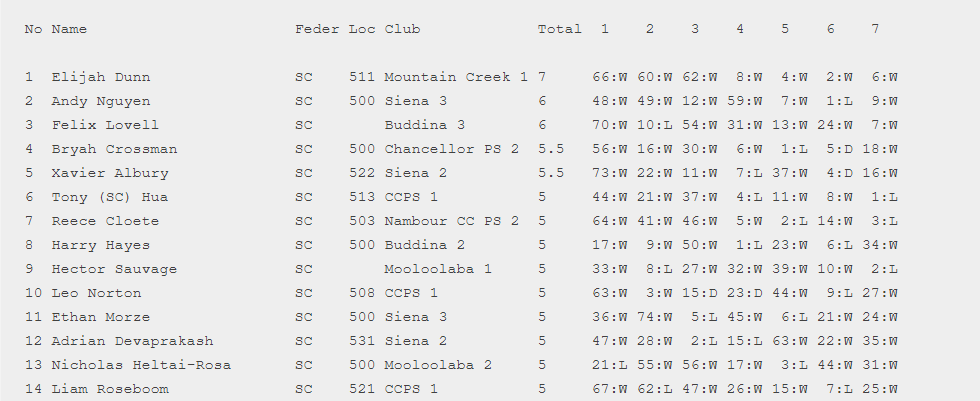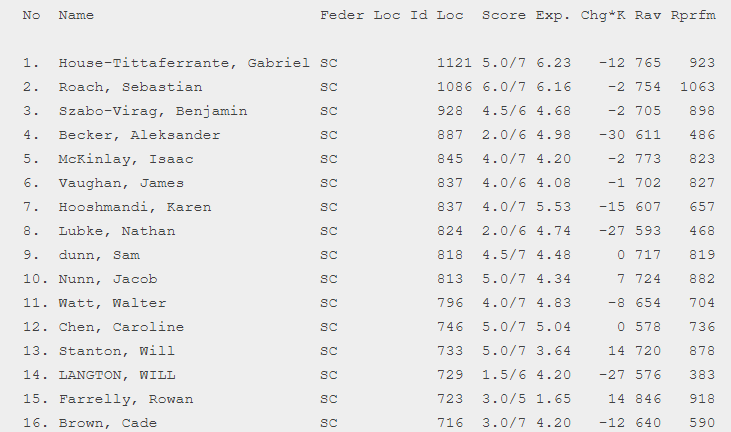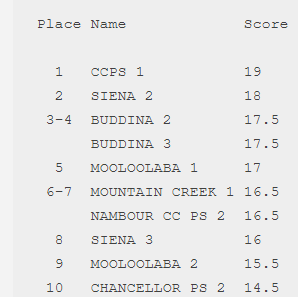We get a LOT of questions about various components of the results pages from tournaments, so the purpose of this blog is to help people to understand how to read chess results from various events.
For all events, there are some common outputs and headings:
- Standings
- Crosstable
- Ratings Changes
In the standings section, we have various columns, of which most are self-explanatory.
- Place – designates the place in which a player finished the event.
- Name – Name of player
- Feder – Zone of the competition (e.g. B for Brisbane)
- LOC – QJ Rating
- Club – Team the player is in. Made up of the school name and usually an additional component
- Score – Score the player achieved in the event.
- M-Buch – Countback 1. Opponents scores added and top and bottom taken off.
- Buch – Countback 2. Opponents scores added together.
- Progr – Countback 3. We usually don’t need to touch this one.

In the Crosstable, the main components are all mentioned above.
The additional information on the right shows who the player played against across the tournament. The number in the field lines up with the opponents number in the very first column. W = Win, D = Draw, L = Loss.

Ratings (Local) – this is the one we get the most questions about because it’s the most unusual and due to ratings being hugely important to many juniors. If this section is not displayed in an Inter-School event, it is because there are either no rated players in the tournament, or because there are very few rated players in the tournament.
- Seed number of the player (generally in rating order)
- Name of player
- Feder – Zone of competition
- Loc ID – not a field used regularly. This would be an ID number that might match into a rating system
- Loc – QJ Rating
- Score – Score in the tournament
- Exp. – This is the expected score against players played against
- Chg*K – This is projected rating change, according to Swiss Perfect. Please note this is an estimated result and IS NOT the accurate change!
- Rav – Average of rated opponents played
- Rprfm – Rating performance of the player against those rated players. Swiss Perfect does not handle perfect scores (e.g. 7/7) well at all.

For an Inter-School tournament, there will be one additional section – Club Standing.
Club Standings is where we can see how a team has gone in an event. Teams are generally made up of 4 players, but can sometimes contain less than that in some cases. The outputs here are pretty self explanatory, however it is important to note that if there are tied teams, it does not sort them into order! The tie-break for teams is the sum of the 4 players M-Buch from the standings.

When we look at weekend events, particularly those played at a long time control, we can sometimes see a different output due to the Vega Pairing Program being utilised. In saying that, the primary information such as the crosstable is all still exactly the same.
Please let us know if you have any questions at all. We are always here to try and help.
